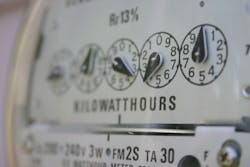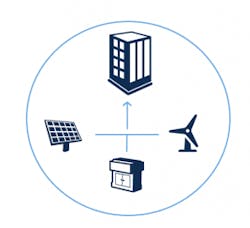5 questions to ask when choosing a demand response program for your microgrid
1. What is the electric load profile of the location?
It is important to understand the electric load profile of the location in question. For example, is the daily load pattern a slow up and down curve throughout the day, like residential loads? Or is the load relatively flat and stable during non-working hours, but then steps up to a higher level when, for example, employees arrive? The type of demand programs that have the most impact will highly depend on these patterns.
2. What demand programs are offered by the serving utility?
The next big step is to evaluate the demand programs offered by the serving utility. Many utility companies offer programs in which customers “enroll” to regularly shift their maximum load to off-peak hours to reduce load at “random” times when called upon. These “random” times generally coincide with overall system peaks. These enrollments are incentivized through pricing at special rates, so some analysis is needed to determine what programs make the most sense for the consumer.
In areas of the country where the electric markets have been deregulated, there may be multiple programs available that can be added together to provide extra benefits to the consumer. These programs vary greatly from one market to the next but generally serve a mix of short-term and long-term value to the utilities which can then be passed on to the consumer. In some markets, a special case exists in which the consumer can drop load, or run generation, during peak periods to avoid system demand charges on their bill, even in the absence of a utility sponsored program.
3. How can the load at your site be manipulated to take advantage of demand program incentives?
Many programs are ideal for loads where the peak demand is high relative to the overall kilowatt-hours consumed and when those high peaks can be shifted or curtailed “on demand.” On demand curtailment works for some businesses, but for many, maintaining a continuity of work or production is the most important constraint. In these cases, on-site generators can be added to provide the demand relief that the utility requires while the customer’s load continues to operate as usual.
4. Are renewable resources available and suitable for the consumer?
One additional solution elaboration can occur when the consumer seeks to use renewable resources. While renewable resources don’t always have power available on demand, when paired with storage batteries, they can be part of a system that qualifies for some demand programs. As a rule, these solutions are not more economic than adding generators or just curtailing load, but consumers with non-economic goals may see a good fit. More elaborate systems will require more elaborate switching mechanisms and control equipment, but these costs can scale nicely for larger loads.
5. How might a consumer arrange for the “customer-side” cost of participating in demand programs?
The last thing to consider is how a consumer might arrange for the “customer-side” cost of participating in demand programs. Enrollment in a simple program that is a good fit for a site’s load pattern and curtailment capabilities may not cost anything. More elaborate solutions that include generators and other resources can be purchased outright, but a great solution for many consumers is to acquire these resources, maintenance free, through multiyear leases. Depending on available demand programs, utilities and others may be able to provide solutions that not only create a valuable revenue stream, but also create a backup power solution for grid outage response at the same time.
A microgrid as a solution
While the definition of a “microgrid” is somewhat flexible, a robust solution for demand response opportunities may indeed be a microgrid that provides response, control and data for your site. This concept of exporting power to the grid can also be an opportunity for the utility consumer. If the consumer owns or leases the generators, the site can be enrolled in pertinent programs or just sell power into the real-time market. Generally, these opportunities only occur in the deregulated markets and require a third party to schedule the exports and serve as a clearinghouse for revenue exchanges.
These questions may be daunting, and you may not want to tackle this on your own. The process of choosing the right demand response program for your microgrid requires some expertise, and a company like Mesa Solutions can help guide you through the process of choosing what is right for you.
Tom Poteet is vice president of corporate development at Mesa Solutions.











